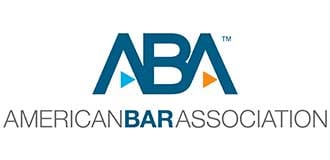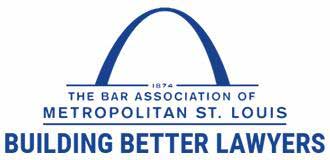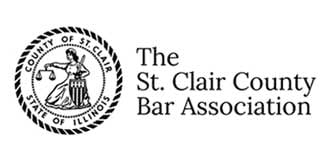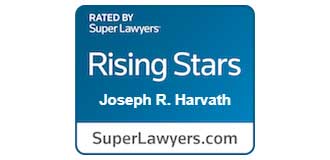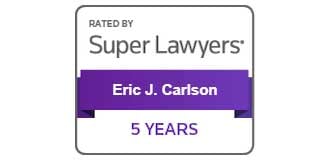By Brian R. Kalb
What happens when a contractor fails to use a written contract or otherwise comply with the Home Repair and Remodeling Act? Can
homeowners use that failure to avoid paying for work done? This article discusses recent caselaw interpreting the Act and its impact on contractors and homeowners.
Most homeowners have hired a contractor at some point to make repairs or an improvement to their home. These contractors are often low-capital, solo workers who meet with a homeowner and give a written or verbal quote, which the homeowner may accept in writing or simply agree to with a handshake. Perhaps more often than not, the agreement is reached without regard to the Home Repair and Remodeling Act1 (the “HRRA” or “Act”).
The HRRA was enacted in 2000 to protect consumers from unscrupulous contractors. It was not addressed by an appellate court opinion until 2005. Because there was little guidance from the courts of review, attorneys and their clients – both homeowners and contractors – faced uncertainty about the consequences of a contractor’s failure to comply with the HRRA.
For example, can a contractor’s failure to comply with some minor provision of the Act – say the requirement to give consumers an informational pamphlet describing their rights – be used by a homeowner to avoid a collection action? Does the HRRA apply to subcontractors as well as general contractors?
In a series of recent decisions, the Illinois courts have cleared up much of the uncertainty. This article reviews these decisions, describes the requirements of the HRRA, and points out areas in the Act that remain unclear. (See page 280 for more on the HRRA.)
Statutory requirements for contractors
The HRRA places numerous requirements on contractors providing home repair and remodeling services to homeowners. The statutory definition for “home repair and remodeling” is broad and entails nearly any type of home improvement or repair,2 though it excludes repairs to home appliances such as refrigerators and ranges. The public policy behind the statute’s enactment was to improve communications between those in the business of home repair and remodeling and their customers, which will increase consumer confidence and reduce disputes.3
Section 15 of the HRRA requires a contractor, prior to initiating home repair or remodeling work for over $1,000, to “furnish to the customer for signature a written contract or work order that states the total cost, including parts and materials listed with reasonable particularity and any charge for an estimate.” The written contract must state the business name and address of the person engaged in home repair or remodeling, including his or her home address.4
If the contract contains an arbitration or waiver-of-jury-trial provision or both, the contractor must inform the consumer of the presence of either provision. The consumer has the right to reject those terms, and the rejection shall be deemed a counter-offer, which the contractor can accept or reject. The contract must contain proof that the consumer “was given the option of accepting or rejecting both the binding arbitration clause and the jury trial waiver clause” by having the consumer sign his or her name and write the word “accept” or “reject” in the margin next to each of the clauses.5
Section 20 requires a contractor who enters a contract for over $1,000 to provide the consumer a copy of the “Home Repair: Know Your Consumer Rights” pamphlet prior to the execution of any contract. The consumer is required to sign and date a “Consumer Rights Acknowledgement Form” that states as follows: “I, the homeowner, have received from the contractor a copy of the pamphlet entitled “‘Home Repair: Know Your Consumer Rights.'” The contractor or his representative shall also sign and date the acknowledgment form, which includes the name and address of the home repair or remodeling business.
The pamphlet must be a separate document, in at least 12 point type, and in legible ink. A copy is located on the Illinois Attorney General’s Web site at
Section 25 requires the contractor to maintain public liability and property damage insurance of $100,000 per person and $300,000 per occurrence of bodily injury and $50,000 per occurrence of property damage, unless the person has a net worth of not less than $1 million as determined on the basis of the person’s most recent financial statement, prepared within 13 months.6 Section 25 also requires a contractor to maintain public liability and property damage insurance in the amount of $10,000 per occurrence for home repair or remodeling non-conformance with applicable state, county, or municipal codes, unless the person has a net worth of not less than $1 million as determined on the basis of the person’s most recent financial statement, prepared within 13 months.7
The statute makes it unlawful for a contractor to enter into a home repair or remodeling contract without “obtaining a signed contract or work order over $1,000 and before notifying and securing the signed acceptance or rejection, by the consumer, of the binding arbitration clause and the jury trial waiver clause as required in Section 15 and Section 15.1 of this Act.”8
The attorney general or the state’s attorney of any county may bring an action on behalf of the state against any contractor violating the Act.
All remedies, penalties, and authority granted to the Attorney General or the State’s Attorney of any county in the state by the Consumer Fraud and Deceptive Business Practices Act shall be available to him or her for enforcement of this Act, and any violation of this act shall constitute a violation of the Consumer Fraud and Deceptive Practices Act.9
The HRRA does not explicitly grant a private right of action to a consumer/ homeowner.
Recent Illinois cases interpreting the HRRA
Three Illinois opinions have interpreted the HRRA: Central Illinois Electrical Services, LLC v Slepian10 and Smith v Bogard11 from the Illinois Appellate Court and MD Electrical Contractors, Inc v Abrams12 from the Illinois Supreme Court.
Slepian: HRRA violation is a defense to a collection action. In Slepian, the plaintiff, Central Illinois Electrical Services (CIES), entered into an oral contract with the homeowners to provide electrical work as part of a remodeling project. The Slepians refused to pay the last installment claimed due. CIES sued to foreclose a mechanic’s lien on their property and alleged unjust enrichment and quantum meruit.
In defending the suit, the Slepians alleged that CIES had violated the HRRA by failing to secure a written contract. After a bench trial, the trial court found in CIES’s favor with respect to the mechanic’s lien, dismissed CIES’s additional counts as moot, and denied all of the Slepians’ claims.13
On appeal, the Slepians argued that the clear language of the HRRA precludes CIES from recovering the claimed amount due when it failed to provide a written contract. CIES argued that because another electrical contractor was initially hired to do the work, CIES was not required by the HRRA to provide a written contract because it did not “initiate” the remodeling work.14
Relying on the well-established principals of statutory construction, the third district rejected CIES’s claim and found that the plain and ordinary language of section 15 of the Act “clearly and unambiguously requires anyone engaged in the business of home repair and remodeling to obtain a signed contract before initiating work that will exceed $1,000 in costs.”15 The appellate court continued:
To interpret the statute otherwise would allow any remodeler following an original remodeler to circumvent or render meaningless the public policy objective of the statute. Furthermore, there is no exception under the Act for projects billed on a time and material basis, or projects that become unpredictable in scope and in nature.16
The court reversed the trial court’s judgment and remanded the case with directions for the trial court to proceed in accordance with the HRRA.17
The Slepian case is instructive for several reasons. First, it was the first case to acknowledge that the HRRA could be asserted as a defense to a collection action.18
Second, the court stated that the written contract must state the contract price with reasonable particularity, even for contracts based on time and materials. Thus, attorneys advising contractors must be clear that time and material contracts should reflect the outer limits by which the homeowner could be liable. The contractor can, and should, amend the contract once the contract price has been reached and there is work to be completed.
Third, a violation of the HRRA is not necessarily a violation of the Consumer Fraud Act.19 As stated above, section 35(b) of the HRRA provides that “any violation of this act shall constitute a violation of the Consumer Fraud and Deceptive Practices Act.” (Emphasis added.) Even so, the Slepian court upheld the dismissal of the defendant’s counter-claim for a violation of the Consumer Fraud Act, writing that “[a]lthough the Slepians alleged they were grossly over-charged for CIES’s services, the trial court, in the best position to evaluate the evidence, concluded the CIES charges, in light of the circumstances of the project, were not unreasonable.”20
Bogard: subcontractors and the HRRA. In Bogard, the fourth district addressed the circumstances under which subcontractors must comply with the HRRA. In that case, Dan Smith, doing business as Dan R. Smith Building Services (Smith), performed construction work for defendants, Corey W. and Angela M. Bogard (the Bogards) as part of a remodeling project on the Bogards’ home. After the project was complete, Smith sued the Bogards for the unpaid balance of the work he had performed. Smith brought an action against the Bogards for breach of contract, unjust enrichment and quantum meruit. The Bogards filed a motion to dismiss, which was granted by the trial court.
The undisputed facts in Bogard were that (1) the total cost of the Bogards’ project exceeded $1,000, (2) Smith failed to provide a written contract or work order prior to initiating work on the project, and (3) Smith failed to give the Bogards the consumer-rights pamphlet. The question was whether those failures served to defeat Smith’s claim for remuneration.
Despite the fact that Smith claimed to be acting as a subcontractor in his work for the Bogards, the court noted that Smith performed a variety of general contractor duties. Thus, the distinction between a contractor and subcontractor was immaterial. Smith communicated directly with the Bogards with regard to the planning, construction, and finishing phases of the project.
Bogard: subcontractors and the HRRA. In Bogard, the fourth district addressed the circumstances under which subcontractors must comply with the HRRA. In that case, Dan Smith, doing business as Dan R. Smith Building Services (Smith), performed construction work for defendants, Corey W. and Angela M. Bogard (the Bogards) as part of a remodeling project on the Bogards’ home. After the project was complete, Smith sued the Bogards for the unpaid balance of the work he had performed. Smith brought an action against the Bogards for breach of contract, unjust enrichment and quantum meruit. The Bogards filed a motion to dismiss, which was granted by the trial court.
The undisputed facts in Bogard were that (1) the total cost of the Bogards’ project exceeded $1,000, (2) Smith failed to provide a written contract or work order prior to initiating work on the project, and (3) Smith failed to give the Bogards the consumer-rights pamphlet. The question was whether those failures served to defeat Smith’s claim for remuneration.
Despite the fact that Smith claimed to be acting as a subcontractor in his work for the Bogards, the court noted that Smith performed a variety of general contractor duties. Thus, the distinction between a contractor and subcontractor was immaterial. Smith communicated directly with the Bogards with regard to the planning, construction, and finishing phases of the project.
The court found that the HRRA applied to Smith, that Smith violated several provisions of the HRRA, and those violations supported the dismissal of his breach-of-contract claim. The court also ruled against Smith in regards to his equity theories. On Smith’s quantum meruit claim, the court stated as follows:
Because Smith is obligated to comply with the provisions of the Act, and because he failed to do so, he is precluded from recovering any amounts he claims due for work performed. Allowing a contractor a method of recovery when he has breached certain provisions of the Act would run afoul of the legislature’s intent of protecting consumers, would reward deceptive practices, and would be violative of public policy.21
Abrams: must subcontractors comply with the HRRA? The most recent decision interpreting the HRRA came from the Illinois Supreme Court. In Abrams, the electrical subcontractor, MD Electrical Contractors, Inc. (“MD”), sued the homeowner in quantum meruit to recover the costs of electrical work performed as part of a home-improvement project. The Abrams moved to dismiss the complaint, claiming MD had violated the HRRA by failing to provide a written contract and a consumer-rights pamphlet.
The trial court granted the Abrams’ motion. MD appealed the court’s dismissal, claiming the HRRA did not apply because MD acted as a subcon-tractor, not a general contractor, and, even if the HRRA did apply, the HRRA did not preclude recovery under quantum meruit.22
The issues before the Illinois Supreme Court were whether the HRRA applied to subcontractors, and if so, whether MD was precluded from recovering in quantum meruit.
On the first issue, the court held that it did not apply to subcontractors. While the court provided a detailed analysis of the statutory language, the court found it compelling that the intent of the HRRA was to regulate the direct contact and contracting between the contractor and the homeowner or consumer.23
In its analysis, the court turned to section 5 of the HRRA, which states that “[t]he business of home repair and remodeling is a matter affecting the public interest.Accurate representations between persons engaged in the business of making home repairs or remodeling and their consumers will increase consumer confidence….”24 Since subcon-tractors work for the general contractor, and not for the consumer, consumer confidence could not be enhanced through the regulation of subcontractors as their business practice is not one that engages consumer/homeowners.25
In addition to the legislative intent of the statute, the court also noted that their conclusion that the HRRA did not apply to subcontractors was consistent with the Mechanic’s Lien Act. Section 5 of the Mechanic’s Lien Act requires sub-contractors to furnish notice to the homeowner within 60 days of providing labor or materials to the homeowner. The HRRA requires, on the other hand, that a contractor provide a pamphlet explaining that a subcontractor may assert a lien and that the homeowner should request a lien waiver from the contractor. The court wrote as follows:
If the [HRRA] required each subcontractor, before work began, to “furnish to the customer for signature a written contract or work order that states the total cost, including parts and materials listed with reasonable particularity and any charge for an estimate” (815 ILCS 513/15 (West 2006)), it would render the notice provided in section 5(b) of the Mechanic’s Lien Act unnecessary and redundant.26
The court did not address MD’s quantum meruit claim because it concluded that it was not properly preserved and presented on appeal.27
Unsettled HRRA questions
The courts answered several questions in Slepian, Bogard, and Abrams. The courts strictly construe the HRRA against contractors, and failure to comply can be asserted as an affirmative defense by the consumer/homeowner. In addition to being available as a sword to the Attorney General for use against unscrupulous contractors, then, it can also be used as a shield by homeowners. And the Illinois Supreme Court most recently held that the HRRA did not apply to subcontractors.
Some questions, however, remain unanswered. One of the most important is whether failure to comply with the HRRA precludes a contractor’s claim for quantum meruit.
The court in Bogard suggests that such claims are precluded. But the Bogard court did not address the equitable merits of the underlying contractor’s claim.
There will be cases in which a contractor increased the value of a consumer’s home but failed to provide a consumer brochure or to include the total contract price on the contract. Should that contractor be precluded from recovery? Was the HRRA designed to bar contractors from receiving the reasonable value of their work on a consumer’s home even if their violation was small compared to the home improvement? If a homeowner was aware and allowed the contractor to make the improvement, how can a trial court simply dismiss the contractor’s complaint without hearing evidence on the allegations?
Attorneys advising contractors must be aware of the caselaw interpreting the HRRA. These cases affect contractors when the contract is formed, throughout performance, and during litigation if a collection action is required. If a contractor fails to comply with the HRRA, homeowners can assert such failures as defense and avoid payment.
Conclusion
The appellate courts have sent a message to home repair and improvement contractors that strict compliance with the HRRA is required. The financial risk of noncompliance far exceeds any government fine ($10,585 in Bogard, for example).
Nonetheless, homeowners should be cautious in using the HRRA as a shield to avoid payment for services provided. It is unlikely that the Illinois courts will ignore a contractor’s prayer for payment when the homeowner truly welcomed and received the benefit from the contractor’s labor.
Bwrian R. Kalb <[email protected]> of Edwardsville is a partner at Byron Carlson Petri & Kalb, LLC, where he concentrates his practice on commercial litigation and construction law.
1. 815 ILCS 513/1 et seq.
2 . The definition includes:
[T]he construction, installation, replacement, or improvement of driveways, swimming pools, porches, kitchens, bathrooms, basements, chimneys, chimney liners, garages, fences, fallout shelters, central air conditioning, central heating, boilers, furnaces, electrical wiring, sewers, plumbing fixtures, storm doors, windows, roofs, awnings, and other improvements to structures within the residence or upon the land adjacent to the residence. See 815 ILCS 513/10.
3 . 815 ILCS 513/5.
4 . 815 ILCS 513/15.
5 . 815 ILCS 513/15.1.
6 . 815 ILCS 513/25.
7 . Id.
8 . 815 ILCS 513/30.
9 . 815 ILCS 513/35(b).
10 . 358 Ill App 3d 545, 831 NE2d 1169 (3d D 2005).
11 . 377 Ill App 3d 842, 879 NE2d 543 (4th D 2008).
12 . 2008 WL 879042 (Ill Sup Ct).
13 . Slepian at 547-48, 831 NE2d at 1170-71.
14 . Id at 548-49, 831 NE2d at 1172.
15 . Id at 550, 831 NE2d at 1173.
16 . Id at 549, 831 NE2d at 1172-73.
17 . Id at 550, 831 NE2d at 1173.
18 . The HRRA was asserted as a counterclaim and not an affirmative defense. The court nevertheless treated it as a defense in its opinion.
19 . 815 ILCS 505/1 et seq.
20 . Slepian at 550, 831 NE2d at 1174.
21 . Bogard at 848, 879 NE2d at 548.
22 . Abrams, 2008 WL 879042 at *2.
23 . Id at *5.
24 . Id, quoting 815 ILCS 513/5 (emphasis in quote).
25 . Abrams, 2008 WL 879042 at *5.
26 . Id at *7, quoting 815 ILCS 513/15.
27 . Abrams, 2008 WL 879042 at *8.

